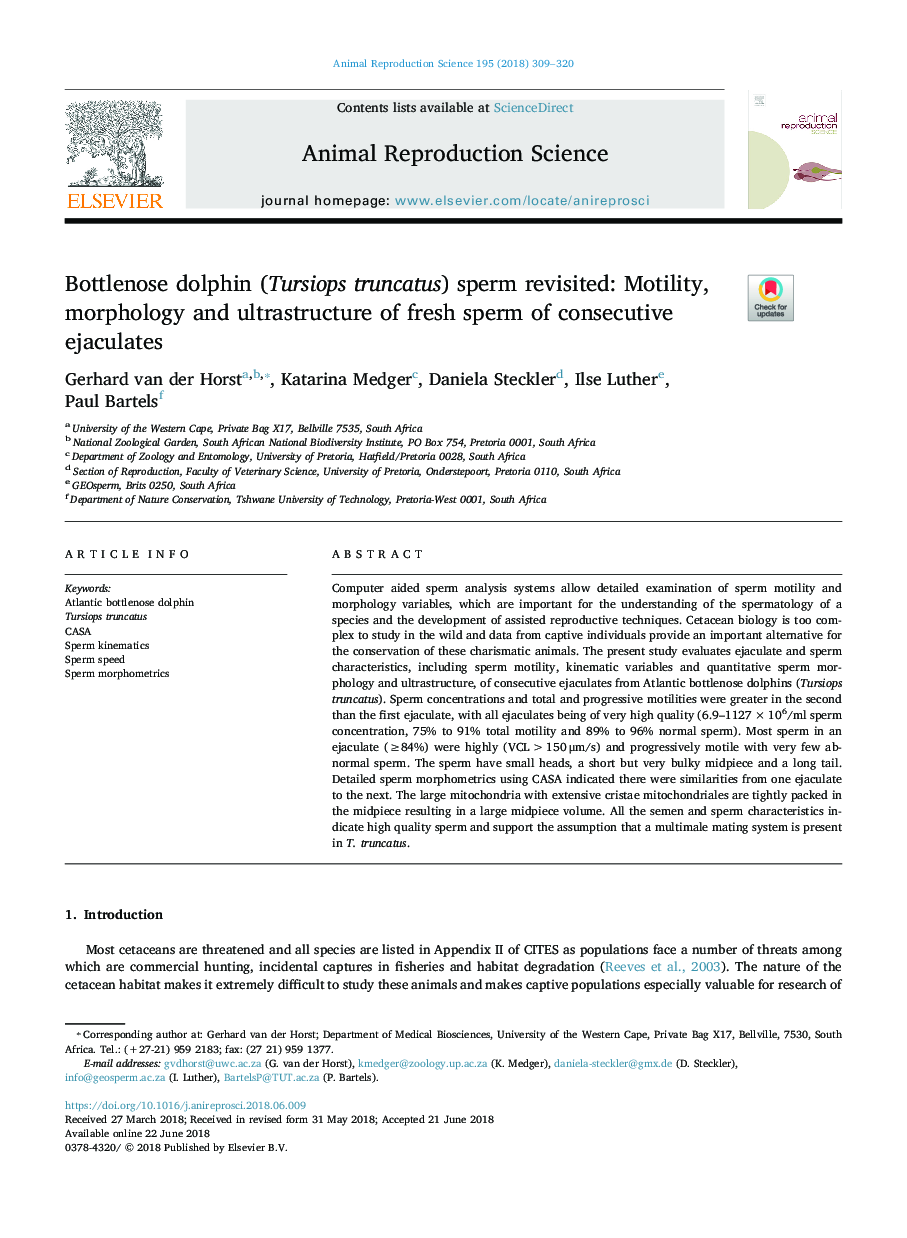| Article ID | Journal | Published Year | Pages | File Type |
|---|---|---|---|---|
| 8403889 | Animal Reproduction Science | 2018 | 12 Pages |
Abstract
Computer aided sperm analysis systems allow detailed examination of sperm motility and morphology variables, which are important for the understanding of the spermatology of a species and the development of assisted reproductive techniques. Cetacean biology is too complex to study in the wild and data from captive individuals provide an important alternative for the conservation of these charismatic animals. The present study evaluates ejaculate and sperm characteristics, including sperm motility, kinematic variables and quantitative sperm morphology and ultrastructure, of consecutive ejaculates from Atlantic bottlenose dolphins (Tursiops truncatus). Sperm concentrations and total and progressive motilities were greater in the second than the first ejaculate, with all ejaculates being of very high quality (6.9-1127â¯Ãâ¯106/ml sperm concentration, 75% to 91% total motility and 89% to 96% normal sperm). Most sperm in an ejaculate (â¥84%) were highly (VCL>150â¯Î¼m/s) and progressively motile with very few abnormal sperm. The sperm have small heads, a short but very bulky midpiece and a long tail. Detailed sperm morphometrics using CASA indicated there were similarities from one ejaculate to the next. The large mitochondria with extensive cristae mitochondriales are tightly packed in the midpiece resulting in a large midpiece volume. All the semen and sperm characteristics indicate high quality sperm and support the assumption that a multimale mating system is present in T. truncatus.
Related Topics
Life Sciences
Agricultural and Biological Sciences
Animal Science and Zoology
Authors
Gerhard van der Horst, Katarina Medger, Daniela Steckler, Ilse Luther, Paul Bartels,
